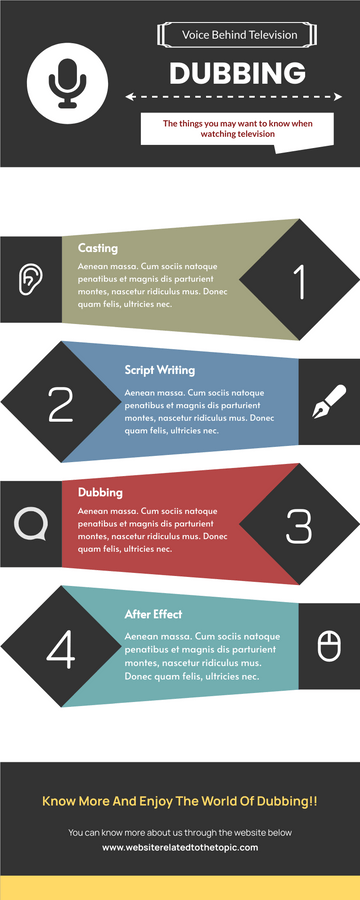Dubbing Infographic
Dubbing, mixing or re-recording is the post-production process of filmmaking and video production, in which additional or supplementary recordings are “mixed” with the original production sound to produce a finished soundtrack.
Dubbing are usually made in the studio after the original video is shot. This may involve the original actor re-recording their lines, the multi-language voice actor recording a translated version of the conversation, or both.
Let’s take a look at some of the steps in the video voiceover process.
- The original video was shot or produced by an actor who speaks a line in the source language.
- Create a translated version of the script and consider pitch changes, accompanying sounds, and other factors that actors and producers need to consider. If the character is speaking in a busy restaurant, the dubbed version of the background sound should be sound, silver and footstep sound, not quiet studio.
- Match the content of the video, the script is edited to ensure the accuracy and time of the translation.
- The second group of voice actors recorded audio in the target language, trying to maintain the tone of the scene, match the rhythm of the speech, and give a clear and expressive vocal performance. If there is music and background noise, it needs to be edited, produced, or eliminated in accordance with the protocol.
- Audio is added to the video. In the dubbed version, the engineer completely replaces the original conversation, and the low volume of the original audio can still be heard below the dubbed audio.
- Produce the file according to the requirements.


